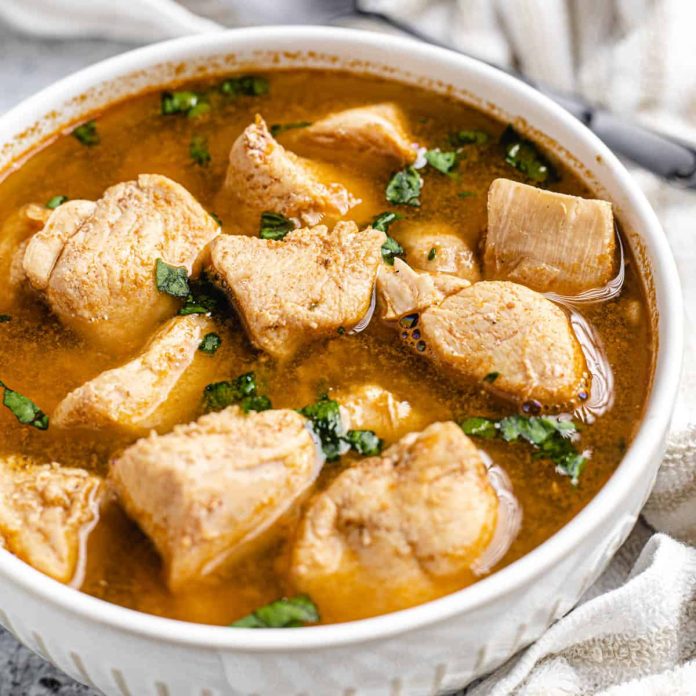Table of Contents
Nigerian pepper soup is a beloved dish enjoyed by many, famous for its rich flavors and aromatic spices. It’s the perfect comfort food, especially when you’re in need of something warm and flavorful. However, one of the things that makes this dish stand out is the spice level. Some love it fiery hot, while others prefer it mild. Whether you’re preparing Nigerian pepper soup for yourself or someone else, getting the spice level just right can make all the difference. In this article, we’ll guide you through some tips for making your Nigerian pepper soup as spicy or mild as you desire.
Understanding the Spice Base of Nigerian Pepper Soup
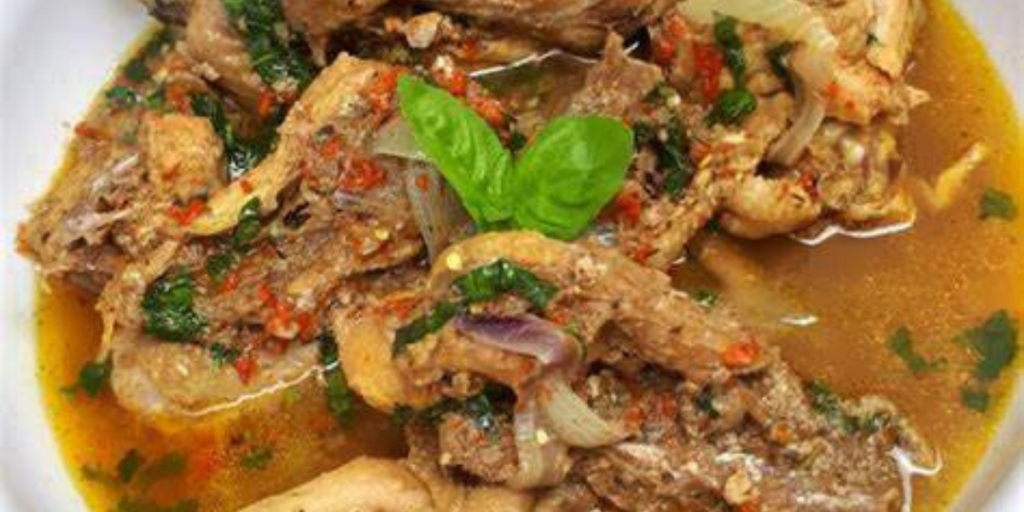
The first step in mastering Nigerian pepper soup is understanding the ingredients that give it that signature heat and aroma. At its core, this dish relies on a combination of fresh and ground spices, including:
- Scotch Bonnet Peppers (Ata Rodo): These fiery peppers are a staple in Nigerian cuisine, contributing both heat and a unique flavor.
- Pepper Soup Spice Mix: This often contains a combination of calabash nutmeg, uziza seeds, and alligator pepper, which add warmth and complexity to the broth.
- Ginger, Garlic, and Onions: These ingredients provide a pungent and aromatic base for the soup, complementing the heat and adding layers of flavor.
Each of these ingredients can be adjusted to control the level of spiciness in your Nigerian pepper soup.
Tip 1: Adjust the Amount of Scotch Bonnet Peppers
Scotch bonnet peppers are key to making your Nigerian pepper soup as spicy as you like. If you enjoy intense heat, you can include several peppers, blending them into the broth to infuse the soup with fiery spice. However, if you’re sensitive to heat, you can either reduce the amount of scotch bonnets or remove the seeds before blending them. The seeds contain the most heat, so eliminating them will significantly reduce the spiciness.
For a balanced level of heat, start with one or two scotch bonnet peppers. As you prepare the soup, you can always taste it and add more peppers if you want it hotter. It’s important to remember that the heat level in the soup will intensify as it simmers, so always taste before it reaches the final cooking stage.
Tip 2: Experiment with Other Hot Peppers
While scotch bonnet peppers are the traditional choice, you can experiment with other types of hot peppers to create a unique flavor profile. Here are some peppers you can use:
- Habanero Peppers: Similar in heat to scotch bonnets, these peppers can add a slightly different flavor. They have a fruity note that pairs well with the pepper soup spices.
- Bird’s Eye Chili: If you want to kick up the heat, these tiny but potent peppers can provide a sharp, concentrated spiciness.
- Chili Powder: For a more controlled heat, chili powder can be added in small quantities during the cooking process. This allows you to regulate the spice without overwhelming the dish.
Adding a mix of these peppers can give you a more complex and layered spice experience, while also giving you better control over the intensity of the heat.
Tip 3: Use Fresh vs. Dried Spices
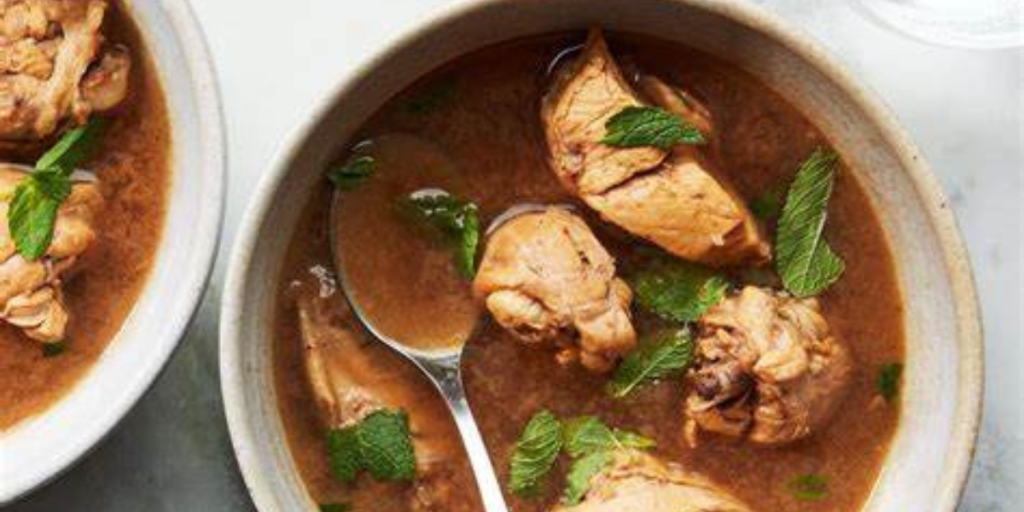
The type of spices you use—fresh or dried—can also affect the overall heat of the soup. Fresh ingredients like ginger, garlic, and onions create a more pungent base that enhances the flavor of the peppers without adding too much heat.
Dried spices, such as ground pepper soup spices (uziza, calabash nutmeg, and alligator pepper), contribute a more mellow heat that infuses the broth over time. These dried spices are potent but less immediate in their intensity. If you want a deep, warming heat, opt for a balance of both fresh and dried spices.
Tip 4: Control the Heat with Aromatic Ingredients
Aromatics like onions and garlic can be used to balance out the heat of the peppers. By adding a generous amount of onions and garlic to the soup, you create a base that allows the spicy flavors to shine without overwhelming the taste buds.
Additionally, ginger helps mellow the sharpness of the peppers and adds a soothing quality to the broth. You can adjust the quantity of these ingredients depending on how much heat you want to subdue. For a milder version of Nigerian pepper soup, try doubling the onions and ginger to soften the spicy notes.
Tip 5: Add Sweetness to Balance the Heat
A little bit of sweetness can go a long way in balancing the heat of Nigerian pepper soup. Some people add a small amount of sugar, honey, or even coconut milk to their pepper soup to create a contrast with the spiciness. While this is optional, it can help cut through the heat, making the soup more palatable for those who prefer a milder taste.
However, keep in mind that too much sweetness can overpower the soup, so it’s essential to find the right balance. Start with a teaspoon of sugar or a splash of honey, and taste as you go.
Tip 6: Use Meat and Stock for Flavor Complexity
The choice of meat in your Nigerian pepper soup can also influence the overall spice profile. Different meats, like goat meat, chicken, or fish, each absorb spices differently. Goat meat, for example, tends to absorb flavors very well and works perfectly with the heat from the peppers.
When cooking pepper soup, you can use meat stock or bone broth to create a richer base. A flavorful stock can reduce the intensity of the heat while enhancing the complexity of the soup. If you prefer to make the soup spicier, use a more concentrated stock and adjust the pepper content accordingly.
Nigerian Pepper Soup for New Moms: Best Recipe of 2025
Tip 7: Add More Liquid to Control the Spice Level
If your Nigerian pepper soup becomes too spicy, you can dilute it with more liquid, such as water or broth. While this may lessen the heat, it will also allow the other flavors to come forward. Be cautious when adding extra liquid, as too much can thin out the soup and reduce its richness.
If you’re cooking in a large batch, you may want to add liquid in stages. This allows you to control the consistency and spice level as you go.
Tip 8: Use a Spice Infuser for Gentle Spice Release
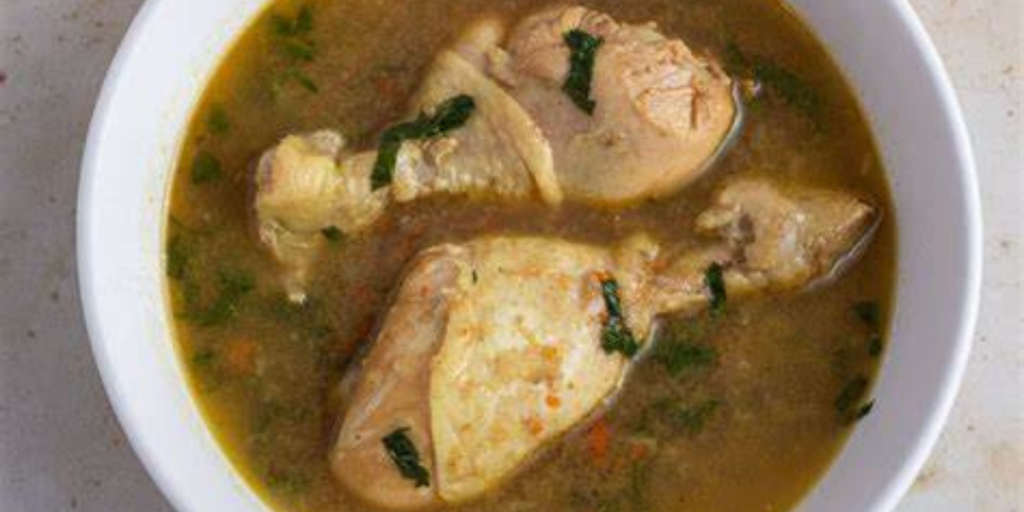
For a more controlled heat infusion, consider using a spice infuser or a muslin cloth bag to hold your pepper soup spices. This allows you to add all your spices (including scotch bonnet peppers, pepper soup spice mix, and other peppers) without them being directly in the soup. The heat will gradually infuse into the broth, and once you’ve reached the desired spice level, you can remove the bag or infuser without making the soup overly hot.
This method is ideal for those who prefer a milder heat but still want the flavors to permeate the soup.
Tip 9: Taste and Adjust as You Cook
The key to a perfectly spicy Nigerian pepper soup is constant tasting. As the soup simmers, taste it regularly to assess the spice level. If it’s not hot enough, you can add more chili peppers or pepper soup spices. If it’s too spicy, add more broth or coconut milk to tone it down.
Remember, the flavors of Nigerian pepper soup develop as it simmers, so what you taste at the beginning may not be the same as the final result.
Nigerian Puff Puff Recipe: Baking Powder in Puff Puff? Best 1
Tip 10: Serve with Cooling Sides
To balance the heat of a spicy Nigerian pepper soup, consider serving it with cooling side dishes. A side of white rice, boiled plantains, or even a cool drink like Zobo or a yogurt-based beverage can provide relief from the spice, making the meal more enjoyable.
Tip 11: Add More Herbs for Depth of Flavor
While Nigerian pepper soup is traditionally known for its spiciness, the depth of flavor also comes from the herbs used in its preparation. Common herbs used in Nigerian pepper soup include scent leaves (also known as Efirin), mint leaves, and basil. These herbs contribute a fresh, aromatic quality to the soup that complements the heat of the peppers.
If you’re looking to tone down the spice while still keeping the flavor bold and herbal, you can increase the quantity of these herbs. Scent leaves are especially popular because they have a citrusy flavor that balances well with the pepper’s heat, and they can help mellow the spiciness when used generously. Mint leaves can also add a refreshing contrast to the spiciness, offering a cooling sensation that balances the heat, particularly in spicy pepper soups.
Incorporating these herbs can transform your pepper soup into something more aromatic and fresh. Just be sure to chop them finely or add them toward the end of the cooking process to preserve their flavor.
Beginner’s Nigerian puff puff recipe Best of 2025
Tip 12: Vary the Type of Protein for Different Spice Profiles
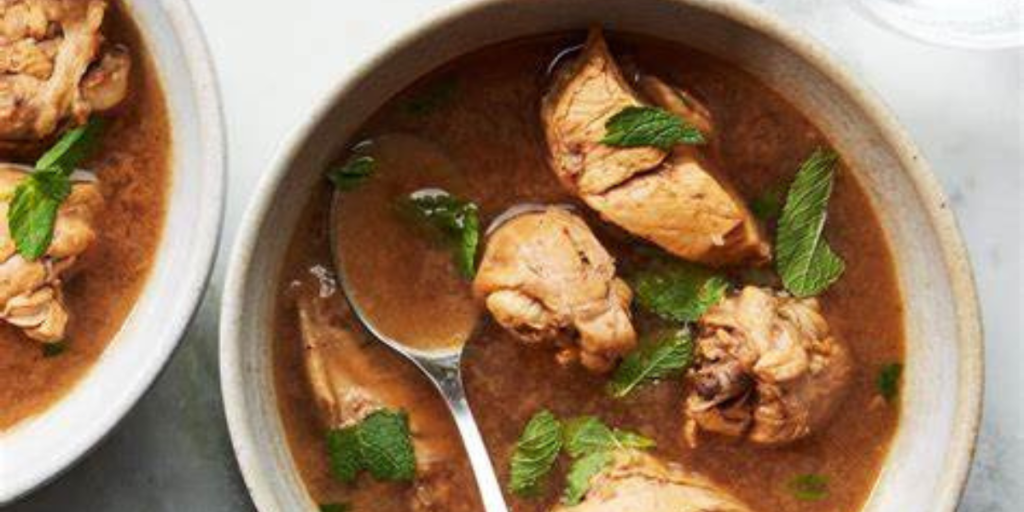
Another way to adjust the spice profile of your Nigerian pepper soup is by experimenting with different proteins. Each protein absorbs spices differently, which can affect how the soup’s flavor develops.
- Goat Meat: This is the traditional meat of choice in Nigerian pepper soup. It has a gamey flavor that pairs well with strong, spicy flavors. When prepared with generous amounts of pepper, goat meat soaks up the heat while still allowing for the richness of the spice mix to shine through.
- Chicken: If you prefer a milder, leaner protein, chicken is an excellent option. It tends to absorb spices more gently, which means the heat from the scotch bonnet peppers will be less intense compared to when you use goat meat. Chicken is also versatile, making it perfect for adjusting the level of spiciness to suit personal preferences.
- Catfish or Tilapia: Fish is often used in coastal Nigerian regions to make a lighter, less fatty version of pepper soup. Fish takes on the flavors of the broth and spices without becoming too spicy. It’s a great choice for those who want a more subdued heat level.
- Beef: While not as commonly used, beef can make for a hearty and rich pepper soup. The beef absorbs the spices and heat slowly, creating a savory broth that allows the pepper to balance out with the protein’s flavor.
By experimenting with different proteins, you can adjust the overall texture and spiciness of the soup. For example, beef may absorb the spices more slowly, giving the soup a deep and warming heat, while fish may allow for a quicker infusion of spice and flavor, providing a more delicate version.
Tip 13: Allow the Soup to Simmer for Maximum Spice Infusion
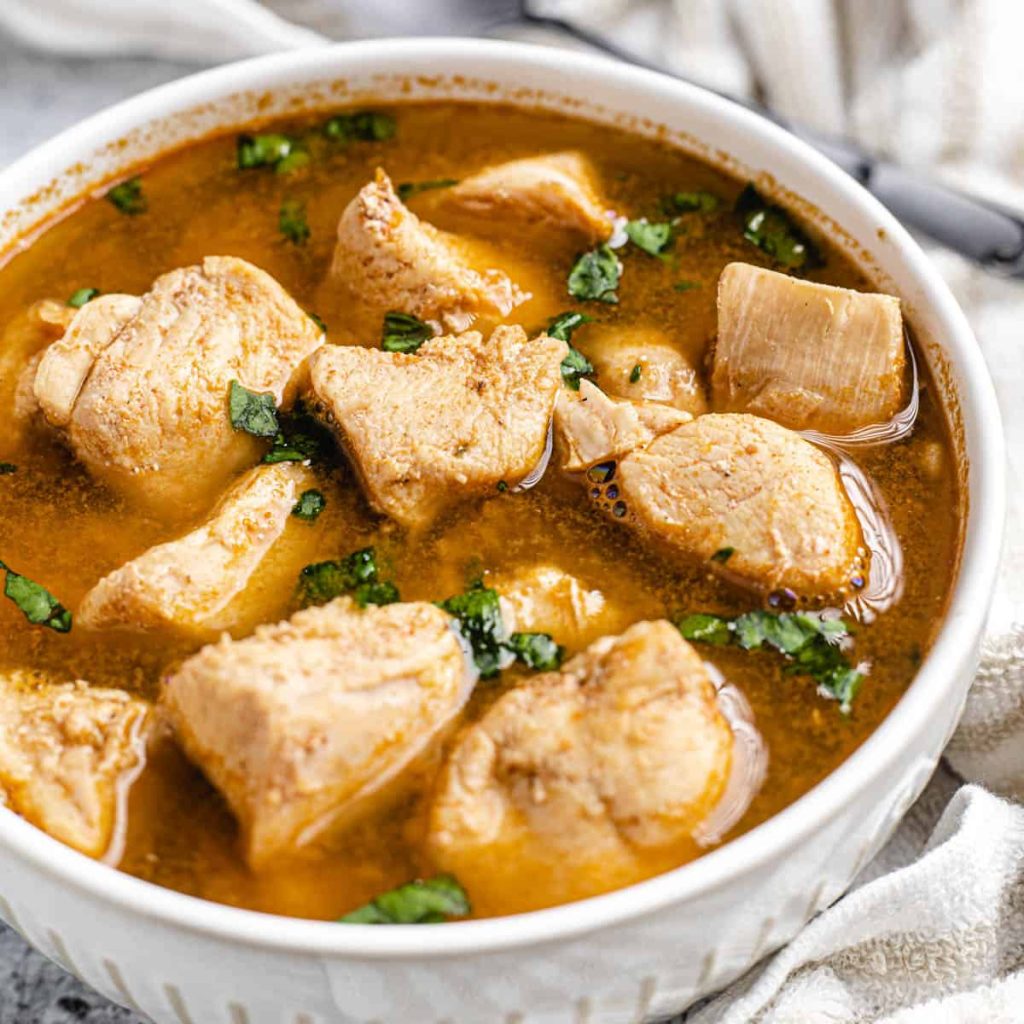
The cooking method and timing also play a role in determining the final spice level of your Nigerian pepper soup. The longer the soup simmers, the more the spices and peppers infuse into the broth, resulting in a more flavorful and intense dish. For a truly spicy Nigerian pepper soup, allow the soup to simmer for at least 45 minutes to an hour, ensuring the scotch bonnet peppers, pepper soup spice mix, and herbs meld together.
It’s important to note that simmering too long can also cause the flavors to become too concentrated and bitter, so it’s crucial to keep an eye on it. To achieve a balanced heat, taste the soup every 15 minutes during the simmering process, adjusting seasoning as necessary.
If you’re looking to keep the spice levels controlled but still flavorful, you may want to reduce the simmering time to 30 minutes, ensuring the pepper infusion is subtle but still present.
Tip 14: Add Acidic Ingredients to Cut Through the Spice
Acidic ingredients like lime, lemon, or tamarind can work wonders in cutting through the heat of the pepper soup. The acidity helps to neutralize some of the intense spiciness, offering a refreshing contrast to the pepper’s burn. Just a splash of lime juice at the end of cooking can bring a burst of flavor that helps balance the richness of the broth and spice.
While some may add lime juice directly to their bowl of pepper soup, others prefer to incorporate it into the broth during the cooking process. The acidity helps reduce the heat without compromising the overall flavor. It’s a great option for those who find themselves overwhelmed by the spice but still want to retain the bold flavors that define the dish.
Tip 15: Taste Before Adding Salt
One of the most common mistakes people make when cooking Nigerian pepper soup is adding too much salt too early. Salt has a way of amplifying the heat of the peppers, making the dish spicier than intended. It’s important to taste the broth before adding salt, especially if you’ve already used a lot of pepper and spice mix.
To ensure your Nigerian pepper soup has the right balance of salt and heat, wait until the end of the cooking process to add salt. By that time, the flavors will have melded together, and you’ll have a better sense of how much salt is needed. Remember, it’s easier to add salt than to take it away, so proceed with caution.
Tip 16: Create a Spicy Pepper Soup Paste for Extra Heat
For those who want an added boost of heat without overloading the soup with too much pepper, you can create a spicy pepper paste. This is a mixture of ground pepper soup spices (like uziza and calabash nutmeg) and additional ground peppers, which you add to the soup for an extra punch.
To make the paste, grind the spices and fresh peppers in a mortar and pestle or food processor, then mix with a small amount of water or broth to form a paste. Add this paste to your soup gradually, tasting as you go, until the desired spice level is reached. This method gives you more control over the heat because you can start with a smaller amount of paste and build it up gradually.
Tip 17: Serve with Vegetables for a Balanced Mea
If you want to make your Nigerian pepper soup a more balanced meal, consider adding vegetables to the broth. Vegetables like spinach, waterleaf, and pumpkin leaves are commonly added to pepper soup in some Nigerian households. These vegetables not only provide additional nutrients but also help to temper the heat of the soup.
Leafy greens like spinach or waterleaf absorb some of the pepper’s spice, offering a more subdued heat. For a slightly sweeter flavor, adding pumpkin leaves or ugu leaves can balance the intense heat of the peppers. Be sure to add the vegetables just before the soup is finished cooking to preserve their flavor and texture.
Tip 18: Make a Spicy Stock to Intensify the Flavo
If you’re aiming for a deeply flavored Nigerian pepper soup that isn’t overwhelming in terms of heat, consider making a spicy stock from scratch. This involves boiling meat (like goat or chicken) with a variety of spices and aromatics, including ginger, garlic, onions, and of course, peppers.
A spicy stock adds richness and depth to the soup, allowing the heat to integrate smoothly into the broth. If you want to make the stock spicier, you can increase the amount of scotch bonnet peppers or add additional chili peppers to the boiling broth.
Tip 19: Control the Spiciness with Coconut Milk or Cream

For those who want to keep the spiciness in check without losing the bold flavors of Nigerian pepper soup, you can add a bit of coconut milk or cream. This not only helps to reduce the heat but also imparts a creamy texture that adds a layer of richness to the soup. Coconut milk works especially well with fish-based pepper soup, as it complements the flavors of the fish without overpowering it.
Start by adding a small amount of coconut milk, stirring it into the soup, and tasting as you go. You can always add more to adjust the creaminess and reduce the spice level.
Tip 20: Allow for Resting Time Before Serving
After cooking your Nigerian pepper soup, let it rest for about 10 to 15 minutes before serving. During this time, the flavors continue to meld together, and the heat will have time to settle. While it might be tempting to dive into your freshly prepared pepper soup, allowing it to rest ensures the spices have had ample time to marry, giving you the perfect balance of spice and flavor.
Conclusion: Your Perfectly Spicy Nigerian Pepper Soup Awaits
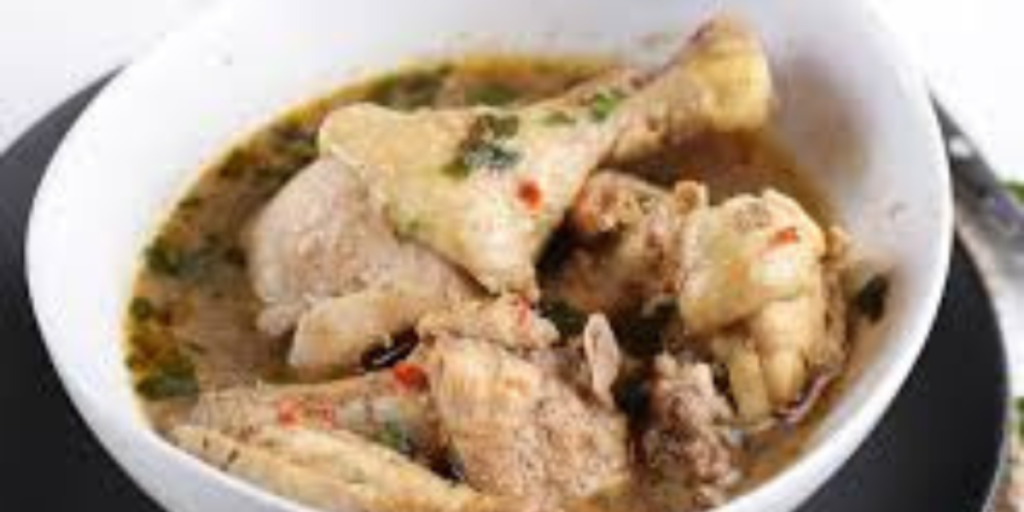
Whether you’re preparing a comforting bowl of Nigerian pepper soup for a family gathering or just looking for a quick fix of something spicy and flavorful, these tips will help you adjust the heat level to your liking. From using fresh scotch bonnet peppers to experimenting with different proteins and herbs, there are countless ways to customize your pepper soup to suit your preferences.
Mastering the art of Nigerian pepper soup is all about finding the right balance of heat, flavor, and texture. With these tips, you’ll be able to make the perfect spicy or mild pepper soup every time. So, gather your ingredients, put these tips to the test, and enjoy the bold, spicy flavors that make Nigerian pepper soup an iconic dish.
















